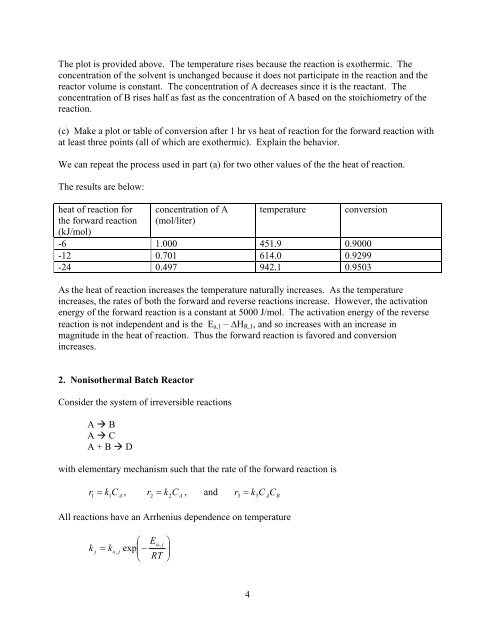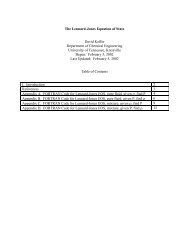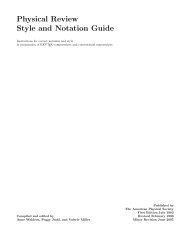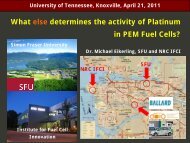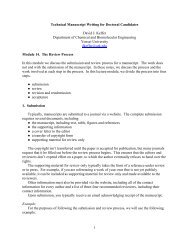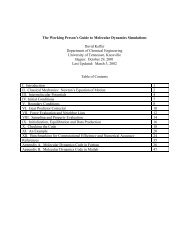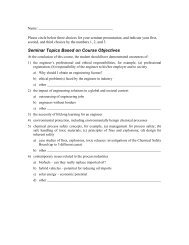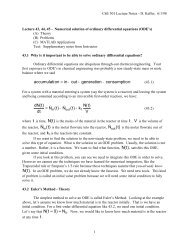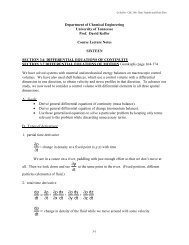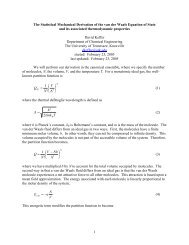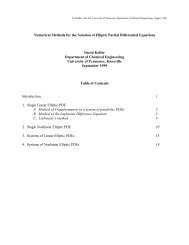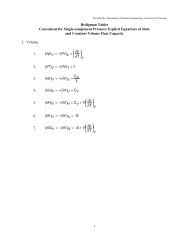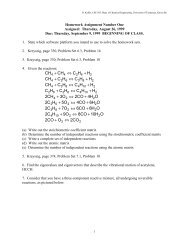Homework 7 Solutions
Homework 7 Solutions
Homework 7 Solutions
Create successful ePaper yourself
Turn your PDF publications into a flip-book with our unique Google optimized e-Paper software.
The plot is provided above. The temperature rises because the reaction is exothermic. The<br />
concentration of the solvent is unchanged because it does not participate in the reaction and the<br />
reactor volume is constant. The concentration of A decreases since it is the reactant. The<br />
concentration of B rises half as fast as the concentration of A based on the stoichiometry of the<br />
reaction.<br />
(c) Make a plot or table of conversion after 1 hr vs heat of reaction for the forward reaction with<br />
at least three points (all of which are exothermic). Explain the behavior.<br />
We can repeat the process used in part (a) for two other values of the the heat of reaction.<br />
The results are below:<br />
heat of reaction for<br />
the forward reaction<br />
(kJ/mol)<br />
concentration of A<br />
(mol/liter)<br />
temperature<br />
conversion<br />
-6 1.000 451.9 0.9000<br />
-12 0.701 614.0 0.9299<br />
-24 0.497 942.1 0.9503<br />
As the heat of reaction increases the temperature naturally increases. As the temperature<br />
increases, the rates of both the forward and reverse reactions increase. However, the activation<br />
energy of the forward reaction is a constant at 5000 J/mol. The activation energy of the reverse<br />
reaction is not independent and is the E a,1 – H R,1 , and so increases with an increase in<br />
magnitude in the heat of reaction. Thus the forward reaction is favored and conversion<br />
increases.<br />
2. Nonisothermal Batch Reactor<br />
Consider the system of irreversible reactions<br />
A B<br />
A C<br />
A + B D<br />
with elementary mechanism such that the rate of the forward reaction is<br />
r k1C A<br />
, 1<br />
r 2<br />
k2C<br />
, and A<br />
r3 k3C A<br />
CB<br />
All reactions have an Arrhenius dependence on temperature<br />
k<br />
j<br />
Ea,<br />
j<br />
k<br />
<br />
o, j<br />
exp <br />
RT<br />
<br />
<br />
<br />
4


